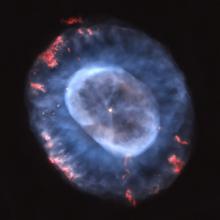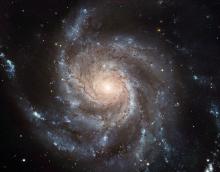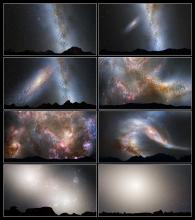Listen to today's episode of StarDate on the web the same day it airs in high-quality streaming audio without any extra ads or announcements. Choose a $8 one-month pass, or listen every day for a year for just $30.
You are here
Symbiotes
A star system in the constellation Andromeda is always hoppin’. Its two stars interact with each other, triggering brilliant outbursts.
Z Andromedae consists of two stars locked in a mutual orbit. In fact, it’s the prototype of a broad class of binaries, known as symbiotes because they interact with each other.
One of the stars is a red giant — an old, bloated star that’s about a thousand times brighter than the Sun. The other is a white dwarf — the exposed core of a once-normal star. Unlike most white dwarfs, it’s “burning” a thin layer of hydrogen on its surface. Because of that, it’s also a thousand times brighter than the Sun.
Occasionally, though, Z Andromedae gets much brighter. What’s happening isn’t fully understood. But one scenario goes something like this.
The red giant spews a strong wind of charged particles. Some of the particles go into orbit around the white dwarf, forming a wide disk. Material in the inner part of the disk falls on the surface of the white dwarf.
Every decade or two, the wind gets thicker, perhaps because of higher magnetic activity on the giant star. That creates an outburst in the outer part of the disk. More material then falls on the white dwarf, stoking its nuclear fires and making it shine much brighter. That disrupts the inner part of the disk, creating high-speed “jets” of particles that shoot out into space.
All that activity causes the system to flare up — calling attention to this busy symbiote.
Script by Damond Benningfield






